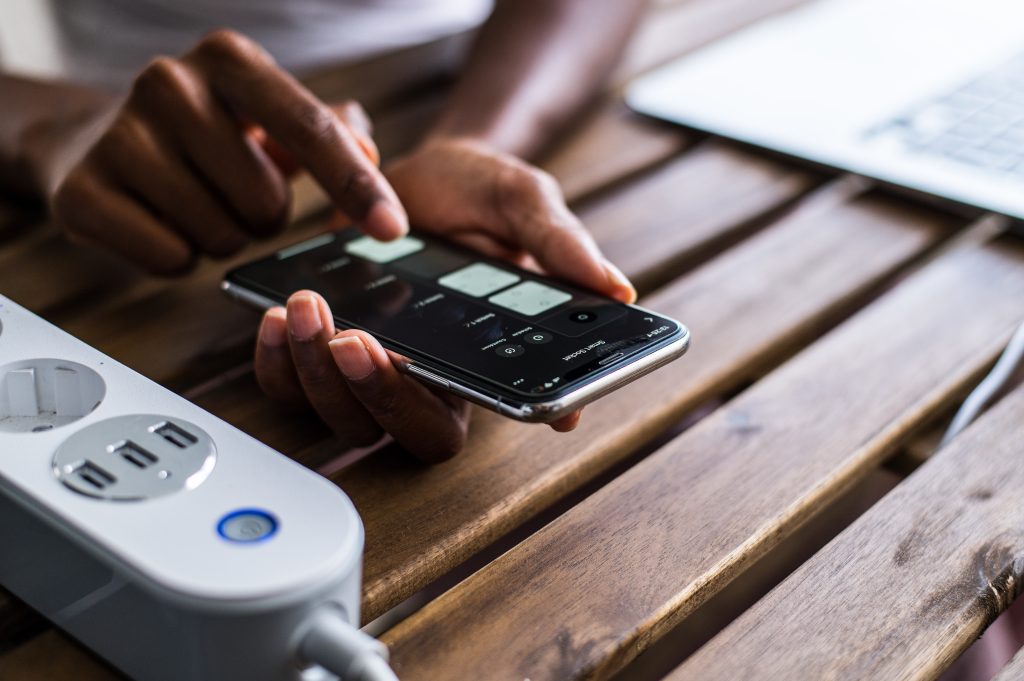As technology continues to evolve, smart devices have become an integral part of everyday life. From smart thermostats to energy-efficient appliances, these devices offer new ways to monitor and reduce energy consumption. Understanding energy usage through smart devices helps save money and contributes to a sustainable, environmentally friendly lifestyle. This article explores how smart devices can help you control energy usage, reduce costs, and minimize your footprint.

What Are Smart Devices and How Do They Help with Energy Usage?
Smart devices connect to the internet and interact with users or other devices through apps, voice commands, or sensors. These devices are designed to enhance convenience, efficiency, and control in everyday life. When it comes to energy usage, smart devices track, monitor, and sometimes control energy consumption in real time.
Smart thermostats adjust your home’s temperature based on your schedule, while smart plugs track the power usage of devices. These devices help you understand energy usage, identify waste, and reduce consumption.
The Role of Smart Meters
One of the primary tools for monitoring energy usage in modern homes is the smart meter. Smart meters provide real-time data to homeowners and energy providers, unlike traditional meters that require manual readings. This data helps both parties identify patterns in energy use and adjust accordingly.
Smart meters have many benefits, including:
- Real-Time Monitoring: You can access your energy usage data on a mobile app or a website. This feature allows you to track your consumption and adjust your behavior to optimize energy efficiency.
- Cost Savings: Smart meters help identify peak energy usage, allowing you to adjust habits and save on your energy bill.
- Improved Energy Efficiency: Smart meters help control energy use by managing devices and adjusting heating or cooling.
Smart Thermostats: The Future of Home Heating and Cooling
Heating and cooling systems often account for a significant portion of household energy consumption. Smart thermostats like Nest and Ecobee improve energy efficiency by learning your preferences and adjusting settings automatically. These devices offer several features that help optimize energy usage:
- Learning Capabilities: Smart thermostats adjust the temperature based on your habits, saving energy by cooling or heating only when needed.
- Remote Control: Use a smartphone app to adjust your thermostat remotely, making it easy to control temperature before you arrive.
- Energy Reports: Many smart thermostats provide energy reports to track usage and help you make adjustments for efficiency.
According to a study by the U.S. According to the Department of Energy, smart thermostats can save 10-12% on heating and 15% on cooling costs.
Smart Lighting: Save Energy While Brightening Your Home
Another area where smart devices shine is lighting. Traditional incandescent bulbs are known for their high energy consumption. Smart bulbs are energy-efficient and customizable, helping you save both energy and money.
- Automated Scheduling: Smart lighting systems can be scheduled to turn on and off, ensuring lights are used only when needed. This reduces wasted energy when rooms are not in use.
- Dimmer Functionality: Many smart bulbs come with dimming features that allow you to adjust the brightness based on your needs. Lowering the brightness can reduce energy consumption significantly.
- Motion Sensors: Some smart lights have motion sensors that turn off when no movement is detected, optimizing energy use.
By replacing standard bulbs with LED smart bulbs, you can reduce energy usage by up to 80%, according to the U.S. Department of Energy.
Smart Plugs: Track and Control Energy Usage
Smart plugs are small devices that fit into your existing outlets and allow you to control the power of any appliance plugged into them. These plugs connect to your smartphone or home assistant, enabling you to turn devices on or off remotely.
- Energy Monitoring: Many smart plugs offer energy monitoring features that track the power consumption of plugged-in devices. This allows you to see which devices are using the most energy and adjust your usage accordingly.
- Remote Control: Smart plugs can be controlled from your smartphone, meaning you can turn off devices like lamps, fans, or coffee makers when you’re not home, preventing unnecessary energy consumption.
By monitoring the energy usage of everyday appliances, such as televisions, refrigerators, or chargers, you can identify and eliminate energy-wasting habits, resulting in significant savings over time.
Smart Appliances: Efficiency at Its Best
Smart appliances, such as refrigerators, washing machines, and dishwashers, are designed to optimize energy usage by using sensors and data-driven algorithms to adjust their performance. These appliances often feature energy-saving modes and can be controlled remotely, ensuring that energy is only used when necessary.
- Smart Refrigerators: These appliances can alert you when the door is left open or when maintenance is required to maintain energy efficiency.
- Smart Washing Machines and Dishwashers: These devices optimize washing cycles by sensing the load size and adjusting water and energy usage accordingly.
According to a report from the International Energy Agency (IEA), smart appliances can reduce energy consumption by up to 30% by adjusting their operation based on real-time data.
The Environmental Impact of Smart Devices
While smart devices are primarily designed to save energy and reduce costs for consumers, they also have a broader environmental impact. By using energy more efficiently, smart devices can help reduce carbon emissions, decrease dependence on non-renewable energy sources, and promote sustainable living practices.
Moreover, as the energy grid becomes more interconnected with smart devices, it will allow for more efficient energy distribution and reduced waste. The integration of smart grids and renewable energy sources will play a key role in transforming the way we manage and consume energy, making it easier for individuals to contribute to sustainability efforts.
Practical Tips for Maximizing Energy Savings with Smart Devices
To get the most out of your smart devices and maximize energy savings, consider these practical tips:
- Monitor Your Energy Usage: Use the data provided by smart meters and smart devices to identify areas where energy consumption can be reduced.
- Set Energy-Saving Schedules: Program your smart thermostat, lights, and appliances to operate during off-peak times to take advantage of lower energy rates.
- Unplug When Not in Use: Use smart plugs to ensure that devices are completely turned off when not in use, especially energy-draining items like televisions, computers, and gaming consoles.
- Upgrade to Energy-Efficient Devices: When purchasing new devices or appliances, look for energy-efficient models that are designed to consume less power and reduce environmental impact.
Conclusion
Understanding energy usage through smart devices is an essential step towards building a more energy-efficient and sustainable home. By incorporating smart meters, thermostats, lighting, plugs, and appliances, you can track your consumption, reduce waste, and lower your energy bills. The future of energy management lies in these connected devices, which not only offer convenience but also contribute to a greener, more sustainable world.
As technology continues to advance, staying informed about emerging trends in smart energy management will help you make the most of these devices, ensuring that you’re using energy wisely and efficiently.
References
- U.S. Department of Energy. (2021). Smart Thermostats and Energy Efficiency. https://www.energy.gov/energysaver/programmable-thermostats
- International Energy Agency (IEA). (2020). Smart Appliances and Energy Use. https://www.iea.org/reports/energy-efficiency-2020/appliances
- Energy Star. (2020). The Role of Smart Meters in Energy Management. https://www.energystar.gov/products/smart_home_tips/smart_thermostats






